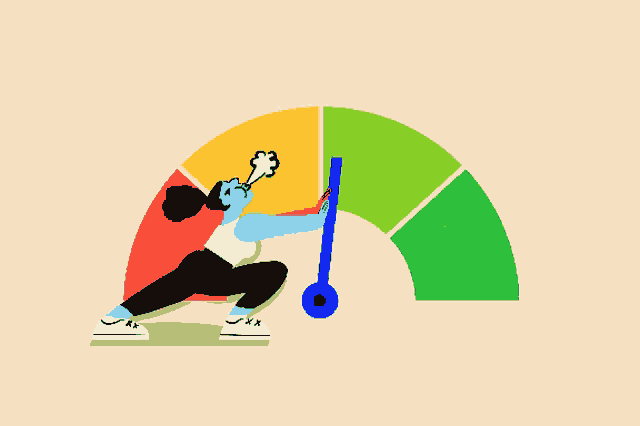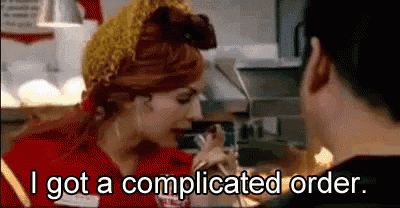What is a Conventional Loan?

We’ve all been at the stage of our adolescence where we watched TV shows and movies and thought to ourselves, “That’s the house I want one day.”
We genuinely believed that those “dream” houses on the screen were affordable for the average person because, well, the average person in the show lives there.
Before we knew it, we had grown up, paid our dues in life, and soon realized that it was time to buy a house.
You quickly became aware of down payment requirements that you wish someone would have told you about years ago, credit scores that have more control over your life than you realized and something called PMI that everyone hates but always talks about.
How did those average people on TV afford such incredible houses?
We want you to get the dream home that you’ve had your heart set on for all these years. Although it may seem unattainable now, with our help at Volunteer Home Mortgage we will work with you every step of the way to get you there.
First things first though, we need to understand all of your options as well as which one is right for you.
After we get through the groundwork, the young grasshopper will become the master and you’ll be ready to call your Realtor to go find your dream house...after we get you qualified, of course!
In this post, we’ll talk about the 6 things you need to know about conventional loans.
1. Down Payment
“Down payment” can sound like a scary term, but a huge benefit to this requirement is a lower monthly payment. The higher amount of your down payment, the lower your monthly payment will be, however, the lower your down payment, the higher your monthly payment will be.
A first-time home buyer can qualify for a conventional loan and there’s even a benefit for them with the opportunity to put as low as 3% down. Just know that your payment will most likely be higher vs someone who put down 5% or 10%.
For someone not a first-time home buyer, the down payment minimum is 5%, which is still very low.
Some restrictions:
- If the home is not a single-family home, which is more than one unit, the down payment requirement could be 15% or more.
- Rental properties or a second home will require a minimum of 10% down
- Jumbo loans require 20%-40% down
- Adjustable rates require 5% down
Try a mortgage calculator if you want an idea of what you can afford as your monthly payment. The worst thing you could do when purchasing a home is blindly taking out a loan just because you “qualify” for a certain amount. The monthly payment is the most important part of taking out a loan.
Rental or investment properties require 20% down. Second homes 10%
Here’s a loan calculator that we trust.

2. Interest Rates
The beauty of the conventional loan is that it is so versatile.
A 30-year term with a fixed interest rate is typical for a conventional loan, but that is not your only option.
15-year loans at a fixed rate are one option, as well as 15 or 30-year loans with an adjustable rate.
If you can take on a higher payment, a 15-year loan may be the right option for you and you’ll most likely receive a lower interest rate.
- Conventional loan rates change daily
- You don’t have control over adjustable rates and your mortgage could be higher or lower at different times of the year
Each loan varies based on personal situations. You won’t get an accurate idea of what your payment would be until applying for the loan. When you apply with Volunteer Home Mortgage, we show you what your interest rate will be as well as your monthly payment so you know exactly what type of home to look for.
3. Credit Score
Credit scores are two things in life, your best friend or your worst enemy.

The higher your score, the better your interest rate will be. This will translate into what your monthly payment will be. Typically, a score of 620 or more is preferred for a conventional loan.
The sweet spot = over 740
One rule of thumb, you’ll never regret working on your credit, no matter how old you are.
4. PMI
As a result of conventional loans not having government backing like their counterparts, the FHA loan and the VA loan, the lender offering the conventional loan is sticking their neck out for you. Meaning, this type of loan is not insured and if the borrower defaults on their loan, the lender will not have any protection and will ultimately be responsible financially.
This leaves the lender exposed and vulnerable, to soften that potential blow, the lender can choose to add PMI to your mortgage payment if you put down less than 20%, you’ll be required to pay private mortgage insurance (PMI).
The amount of your PMI will ultimately be decided based on the type of conventional loan you get, your credit score, and the amount of your down payment.
Helpful Tip:
Don’t want to have PMI added to your monthly payment? No problem. Buyers can oftentimes pay an upfront cost to cover the PMI or some buyers pay it by slightly increasing their interest rate.
PMI is an important part of the loan process and you’ll need a lender you can trust to walk you through all the options and figure out which one is best for you.
Don’t lose hope!

PMI is not forever. You heard that right.
And you will not need to refinance your house to make the PMI go away.
Once you achieve 20% equity in your home, you can request that your PMI be removed from your payments. So make sure you are paying attention to your loan as time goes on. Once the home acquires 22% equity, your PMI will be removed automatically. But who wants to wait until 22%? Not us.
Stay alert and don’t be afraid to ask once you reach 20%.
Loophole:
Pay attention to the value of your home. If you reach 20% equity in the home because of an increase in value (for whatever reason), be sure to contact your lender to get an appraisal and recalculate your PMI requirement.
Here’s a great reference for what could increase the value of your home. Hint It isn’t just adding upgrades to your house!
5. How is it Different?
So, do conventional loans stack up against the VA loan or FHA loan?
The VA loan is limited to veterans, active-duty military members, and their surviving spouses.
Pros of the VA loan:
- A down payment is not required
- No PMI requirement regardless of how much your down payment is
Cons to VA loan:
- Cannot use it for a second home, you need to either pay off that loan or sell the current home to use the VA loan again
- Have an allotted loan amount based on the location of the home
The FHA loan has its pros and cons as well.
Pros of the FHA loan:
- Lower credit score requirement than a conventional loan
- Minimum down payment of 3.5%, even with a low credit score
Con to the FHA:
- PMI is required for FHA loans if the down payment is less than 10% and will last for the entirety of the loan, regardless of how much equity is in the home. Whereas, for conventional loans, PMI drops off after reaching 22% equity in the home
6. Different Types?
To add to the complexity of mortgage loans, there are different types of conventional loans.

Conforming Conventional loans
If a lender would like to sell a loan to a government-sponsored enterprise like Fannie Mae or Freddie Mac, they have to meet certain requirements.
Why would a lender want to sell a loan? This frees up lenders’ funds which allows them to bring in more qualified buyers and put them into homes.
Nonconforming Conventional loans
Simply put, nonconforming is the opposite of conforming loans. These do not meet Fannie Mae’s or Freddie Mac’s guidelines.
Jumbo loans are an example of this. These loans exceed conforming loan limits, which are typically $548,250 in most counties across the country.
Fixed-rate Conventional loans
As we mentioned earlier in this post, there are fixed-rate loans and are typically 30-year mortgages, due to the more affordable monthly payment. This interest will stay the same for as long as you have the mortgage.
Adjustable-rate Conventional loans
An adjustable-rate mortgage, also known as ARM, are rate that will fluctuate over time. After an initial fixed-rate period ranging from three-10 years, the ARM rates usually adjust annually.
Low-down-payment Conventional loans
There are opportunities to pay a lower down payment but the lower you go, the more risky it is, and will ultimately take you longer to build equity in your home vs someone who makes a larger down payment, as well as additional interest.
You could put down as little as ZERO for your down payment, but your debt-to-income ratio plays a significant role in this as well as your credit. This is very risky, so it is not always advised.
Conventional Renovation loans
Chip and Joanna Gaines aren’t the only ones who can fix up a house and do it well. Oftentimes it can be hard for buyers to find the house they want in the budget they have.

Luckily, certain loans assist with buying a fixer-upper if the market is high or when inventory is low for good-quality homes.
The CHOICERenovation loan and HomeStyle loan are two great options that allow the right buyers to purchase a home, make it their own, AND increase the value of the neighborhood.
Summary
If you qualify for the credit score requirement, with a downpayment of at least 3-5%, and have a lower debt-to-income ratio, the conventional loan may be the best option for you.
Volunteer Home Mortgage can help you decide if this is the best fit for your situation, give us a call!